Remembering Bapurao Naik
Arun Naik detailed the achievements of his father, Bapurao Shivram Naik, during the Bapurao Naik Centenary Celebration at the Mumbai Marathi Sahitya Sangh on 1 March 2019. The following is the edited transcript.
20 Mar 2019 | By PrintWeek India
My father Bapurao Shivram Naik was born on 29 February 1920. He will complete 100 years on 29 February 2020. So, this is his centenary year.
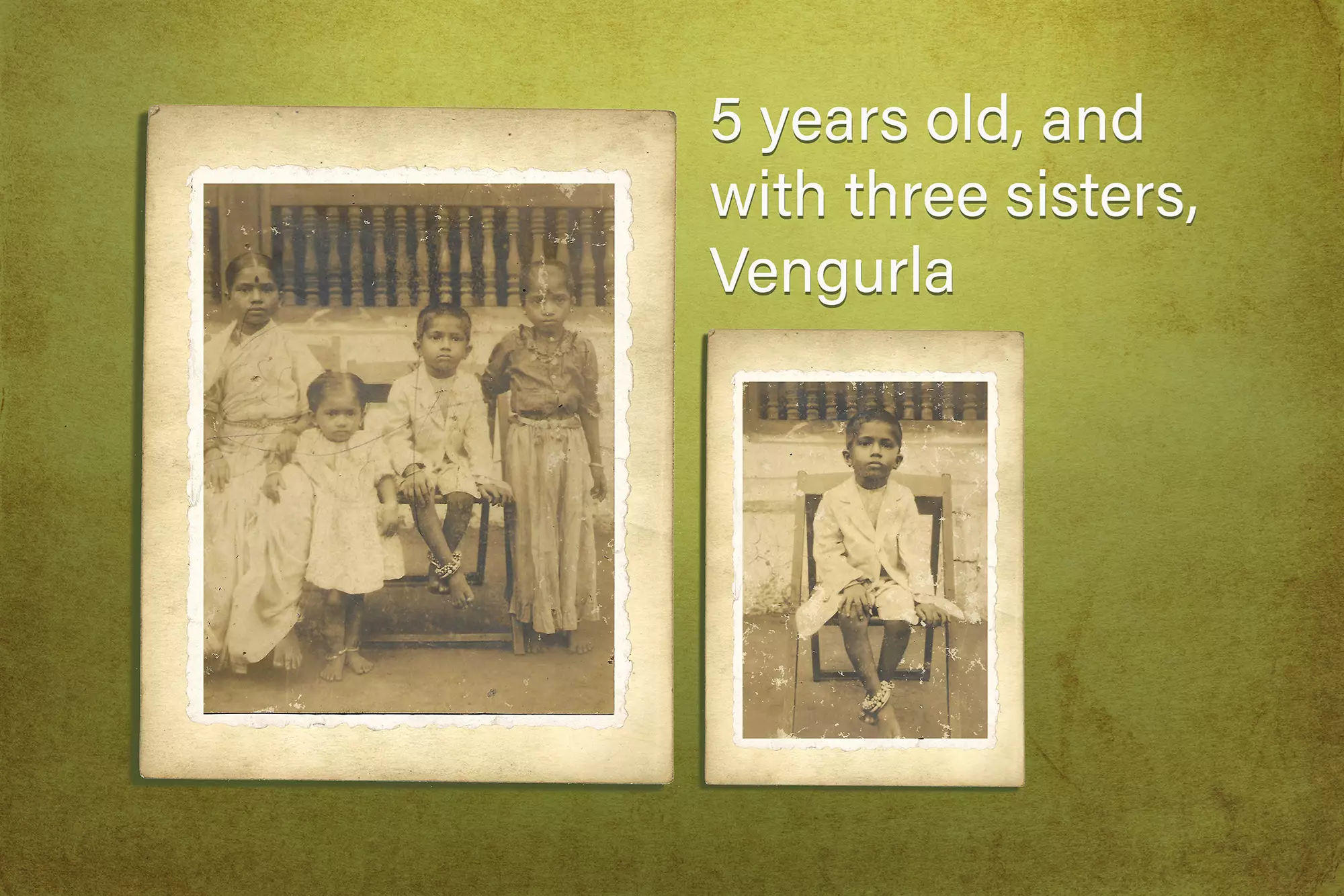
Bapurao Naik was born in a well-to-do middle-class family in Vengurla, now in Sindhudurg district. The family was well-to-do, but only for a very short period after Bapurao was born. His mother Laxmi passed away in 1925 when he was just five years old. He had two elder sisters, one younger sister, and one younger brother. My grandfather owned a teashop. After he lost his wife, he also lost interest in life and in business. My father studied in the Mission School in Vengurla and came to Mumbai for his matriculation at the age of 16 in 1936.
He passed matriculation with flying colours, but had no money and could not pursue higher education. He had to work, either in Vengurla, serving tea to customers, or in Mumbai.

Coming to Mumbai
His aunt lived at Gaodevi in a chawl with her widowed daughter, who was a school teacher. Another cousin lived in Girgao in Ramchandra Building near Portuguese Church. Her husband was in the High Court. His own sister lived in a semi-chawl in Matunga. Her husband was an accountant in the Asbestos Cement Company. Some stray relatives lived at odd places. But no one except the Gaodevi aunt would have him.
He saw an advertisement in a newspaper. They wanted apprentices in the Government Central Press at Churni Road. It was a part-time job with part-time classes in the Victoria Jubilee Technical Institute at Matunga/ Wadala. That suited him. He could live at Gaodevi and attend college at Matunga near his sister’s house on Bhaudaji Road. He completed the five-year diploma in printing and got recruited as a junior assistant manager in GCP. This was till 1941.
The Government Central Press, GCP, is at Marine Drive alongside the Churni Road station. It was a huge press even in those days. It now extends up to Catholic Gymkhana along the railway track. My father joined here as an apprentice and also completed his diploma at VJYI in ‘Typography’.
Meeting Dr Bhalerao
A road leads from Marine Drive through the compounds of the GCP and Bal Bhavan, becomes a bridge and crosses the railway track, and alights into a lower level between Saifee Hospital and a Muslim Cemetery (where Alladiaya Khan lies buried). The road becomes Kelewadi and opens out on Girgaum Road, or Nana Shankarshet Road. Beyond this is the ethos-filled locality called Girgao. Again the road enters the dense buildings into Kandewadi and comes out after some twists and turns into Girgaon Back Road, Vithalbhai Patel Road. There still exists a small building called Narayan Sadan. This is flanked by high buildings. It is mostly a Gujarati locality. This is where Dr Amrut Narayan Bhalerao lived.
Dr Bhalerao was a medical doctor who had his practice a few buildings away in Khetwadi, just beyond Wilson High School. It was a good practice. But Dr Bhalerao was not satisfied. He was also a keen sportsman, and played cricket and tennis, and he took a keen interest in literature and theatre. He had founded the Mumbai Marathi Sahitya Sangh in 1935. My father too had interest in these subjects and he joined the Sahitya Sangh as a young volunteer.
Meeting Datto Waman Potdar
My father was transferred to the famous Yerawada Prison Press in Pune in 1941, immediately after he completed his diploma from VJTI. In Pune, he met many interesting personalities, prominent amongst them being Mahamahopadhaya Datto Waman Potdar. He was a professor of Marathi but was a keen history researcher with special interest in Shivaji. Potdar was also involved in literary activities of the Maharashtra Sahitya Parishad, almost the apex body then. Potdar was a colourful character in his costumes, his speeches, and his interest in history, literature, and education. He was the chairman or the president of all institutions in Pune even remotely connected with his subjects of interests. Though he did a lot of actual field work in research, he did not really write much. Marathi Bhashecha Ingraji Awtar and Mi Yuropat Kay Pahile are probably the only books he published.
But Potdar influenced my father in a big way and instilled in him the research instinct. My father then started thoroughly studying every subject he came across.
Writing Kagad
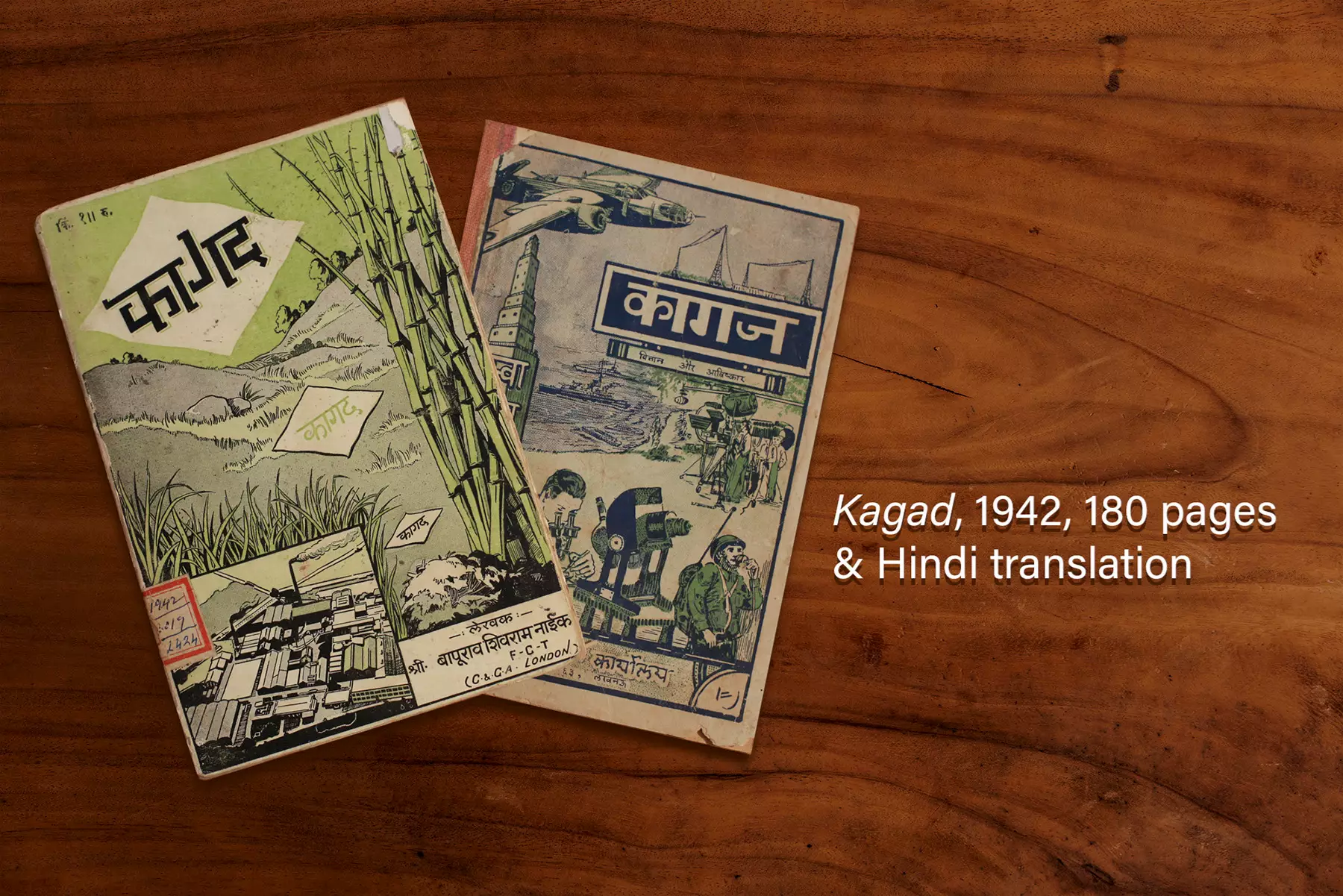
In 1942, when he was only 22 years of age, he wrote a Marathi book in paper manufacture and use: Kagad. This book was published by a major publisher. It was comprehensive. It dealt with raw material, processes, chemistry, use, sizes, varieties, physical properties of paper. This remains the only book of its kind in Marathi. The book was revised and reprinted in 1982 with the same title. I too wrote a similar book in Marathi, but for high school students.
During the war years between 1939 and 1945, there was a constant threat of an aerial attack and bombing. They used to have air raid wardens in those days. My father was one of them. And he wrote a booklet for citizens. This booklet analysed the various kinds of bombs, its effect and injuries, what should one do, shelters, first aid, post-raid activity, fires, how to treat them, rescue, etc. I came across this booklet some years ago and I was surprised to note how much he knew even then. I cannot find the booklet now.
Even as my father was working in Pune, he would make frequent trips to Mumbai, and also travel with the Mumbai gang to annual literary and theatre conferences all over Maharashtra. Yerawada is a suburb of Pune and in those days, it was remote and sparsely populated. My father would cycle down to Pune whenever he got a chance and even spent weekends with Potdar. This kept him amongst literary and theatre people. In Yerawada, he spent time in the akhada and in learning and reading Sanskrit literature as well as English literature.
Working with the Sahitya Sangh
There is some vague information regarding Mama Warerkar, the playwright. Mama was a postmaster at Sawantwadi, when my father was in Vengurla. Then both shifted to Mumbai. Mama lived in Haji Kasam Wadi beyond French Bridge. It seems that my father worked as a scribe for him in those early years.
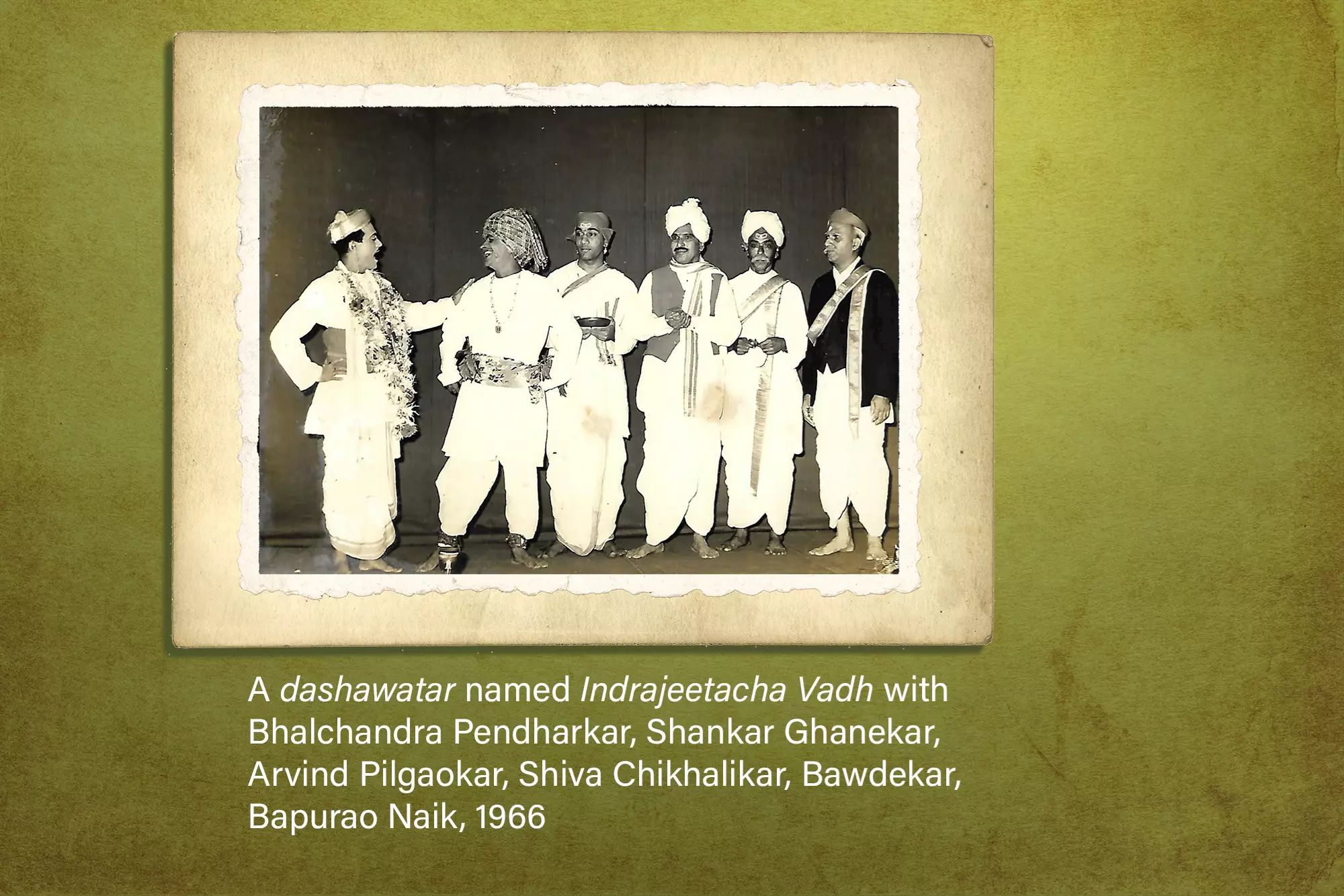
The Sahitya Sangh had these annual festivals and Mama Warerkar and Bapurao proposed that they should have a tamasha show. Now this was unheard of in those days. Mama and Bapurao even paid a visit to Pathe Bapurao, a famous practitioner of this art. His Mumbaichi Lavni was famous. He agreed to do a show. Mama Warerkar even wrote a short scene featuring this visit. The scene was not only enacted, but it was done by Mama Warerkar, Bapurao Naik and Pathe Bapurao.
In London
In 1951, Bapurao was sent to England by the government to study further at the world-renowned London School of Printing. He studied here for two years and obtained the diploma and also passed various other advanced exams. He became a member of the reputed Institute of Printing Management and also a fellow of The Royal Society of Arts. He stayed on in England for a further six months and trained at the Monotype and Linotype factories. These were the two most famous, and in fact, only mechanised type casting and composing machines in the world. This was the foundation of the book Typography of Devanagari about which I shall talk later.
Dr Bhalerao had, in the meantime, purchased a good piece of land in Kelewadi. This is where we are sitting now. This land was just adequate for a theatre.
Brush with theatre
The scholar-researcher Shri Na Banahatti and Bapurao put forth the concept that the first Marathi play was Vishnudas Bhave’s Seeta Swayamvar in 1843. This statement was not completely accepted. It became controversial. My father much later wrote a booklet (1967) for the Maharashtra Information Centre, New Delhi, titled The Origin of Marathi Theatre. Shanta Gokhale acknowledges this as a source in her comprehensive note in Oxford Companion to Indian Theatre (pp 255-260). This is now the accepted version of the first Marathi play. It is true that we had folk forms like dashawatar in Konkan and yakshaganin Karnataka. Bhave, so say Banahatti and my father, took his idea from Sanskrit theatre in ancient and medieval eras and English language plays being done by Britishers in Mumbai, as also the folk forms. Some other people cite the Tanjavur plays of Sarfoji Raje.
Be that as it may, the fact is that my father was a key figure in establishing Bhave as the aadya natakkar, then and again in 1967 when he wrote this booklet. This article and those of Vasant Shantaram Desai, K Narayan Kale and Dnyaneshwar Nadkarni were published as booklets by the Centre and again as a book by Popular Prakashan. I did not find these publications in my collection.
The Sahitya Sangh had already begun the annual drama festivals after 1944. These were huge affairs and the Catholic Gymkhana ground was used for this. A temporary open-air theatre was constructed every year. It was open ground and there was no dearth of space. The open-air auditorium was fanned out to cover almost a quarter of a circle. We have a drawing which will come up later.
Bapurao would be in charge of various functions during this period from 1943 in Sangli and then from 1944 to 1951 in Mumbai on Kennedy Seaface. Here, he oversaw operations from the construction of the audience and stage, to lights, sets, sound system, etc.

Also, during this sojourn in England, the Sahitya Sangh had constructed the open-air theatre and the annual seasonal festival was held here. Except for the monsoon months the activity was continuous. Dr Bhalerao had already started dreaming about a full closed theatre.
Dr Bhalerao wrote to him in London and asked him to study theatre architecture with a view to design a permanent closed theatre in Kelewadi. Bapurao did just that. He said in his article that he mastered this subject, collected plans, attended drama courses, spoke to equipment people. Dr Bhalerao wrote very long letters very frequently and my father sent long replies. These letters are now in the NCPA archives.

Upon his return, he was posted as assistant manager in GCP in Mumbai. It was during this period that Sahitya Sangh produced Rajmukut, Shirwadkar’s adaptation of Macbeth. Dr Bhalerao invited the noted British director Herbert Marshal to direct. Nanasaheb Phatak as Macbeth and Durgabai Khote as Lady Macbeth were supported by other principal actors. Da Ga Godse designed the sets. A large apron was constructed jutting into the open space in front of the stage. A one-storey building was made upstage and it looked like an Elizabethan stage. My father had returned from England with spots and dimmers in his mind. Hitherto-fore Marathi theatre knew only flood lights and painted curtains. This was different. Parsi and English companies were using modern lighting. But it was new to Marathi.
In 1955, we all went to Delhi for the first-ever National Festival. Alkazi was there, Shambhu Mitra was there. Vijayabai was with Alkazi’s troupe. We did Bhaubandki, directed by Keshavrao Date with Nanasaheb Phatak and Durgabai. Da Ga Godse did the sets and my father did the lights. The play stood first and got the President’s Medal. In fact, these were the only two plays which my father did as a light designer.
Pune, Baroda, Nagpur
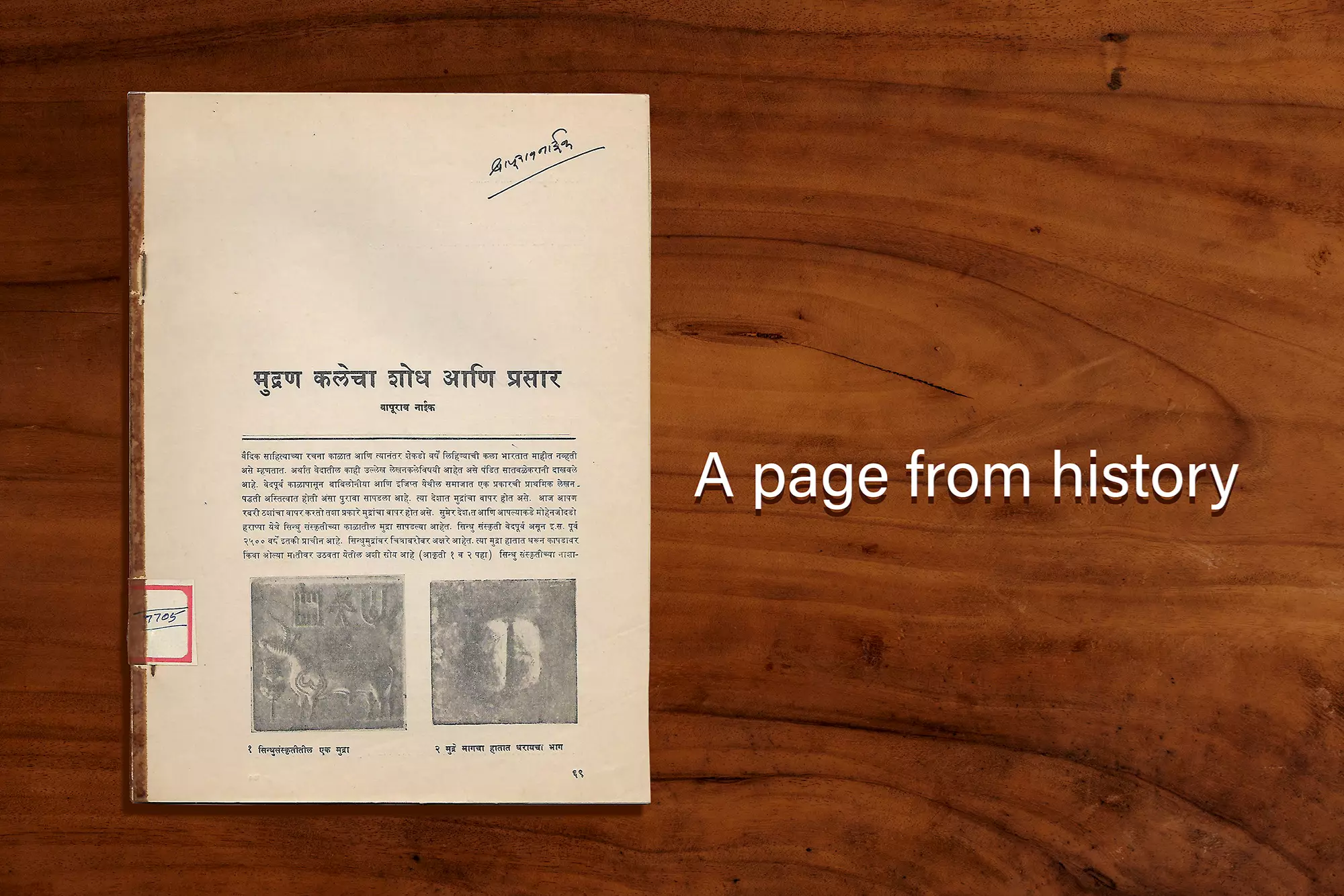
My father was suddenly transferred to Yerawada Prison Press again. The current man there was stabbed by a life-term prisoner. No one would go there to replace him. But my father did not care. In fact, the same prisoner became a loyal orderly to him and would carry me in his arms every time I would accompany my father to the press. The press was in need of good management. My father provided that. We were in Pune for three years.
It was in 1955 that Dr Bhalerao passed away. He was only 53 years.
Va Da Gokhale was a teacher in Vengurla when my father was studying there. Gokhale then came back to Pune when my father took private lessons from him in Marathi for his BA exams which he passed externally in Pune. Gokhale was also associated with the Sahitya Sangh and would come to Mumbai often with my father and Potdar. It seems that Gokhale was a devout person and he made a special idol of Ganapati in five metals. This he presented to my father. We still have it, along with many more Ganapati idols, including a huge one made by MR Achrekar.

In 1956, my father was transferred to Baroda as manager. But we were there only for 18 months. With the reorganisation of states on linguistic principles, my father was transferred to Nagpur as manager. Nana Jog was as keen a theatre lover as Dr Bhalerao. My father befriended him and I remember that they went to see Lawrence Olivier’s film Hamlet. Nana Jog later translated Hamlet, and shows of this translation/ adaptation are running today with Manava as Ophelia. Vidarbha Sahitya Sangh was like Mumbai Marathi Sahitya Sangh. Same aspirations. Even they were planning a new theatre. My father assisted Nana Jog in the planning.
We were in Nagpur only for a year. It was here that my father first came in touch with textbooks. School textbooks were private in the erstwhile Bombay State. But they were nationalised in Madhya Pradesh, of which Nagpur was the capital. The Marathi primer was called Balbharati. That name my father introduced in Maharashtra when school textbooks were nationalised here in 1967.
The Nagpur press was in a mess and my father set it right in a year. So they wanted him back in Mumbai as deputy director in charge of all the government presses in Bombay State.
Into the theatre movement
In Mumbai, Dr Bhalerao was not there. But Tatya Amonkar was carrying on the good work. The drama wing of Sahitya Sangh was in full swing with grand successes like Marathe’s Honaji Bala, a musical, and PL Deshpande’s Tuze Aahe Tujapashi and Sundar Mi Honar. Deshpande’s plays were modern in the true sense, even technically. Now the Sahitya Sangh really needed a permanent theatre. These three plays got us some money. Saraswat Bank was prepared to help. Membership grew. The governments of Morarji Desai and Yashwantrao Chavan were sympathetic. Both these chief ministers were keen theatre-goers and frequent visitors in the open-air theatre. Marathi theatre was seeing good days.
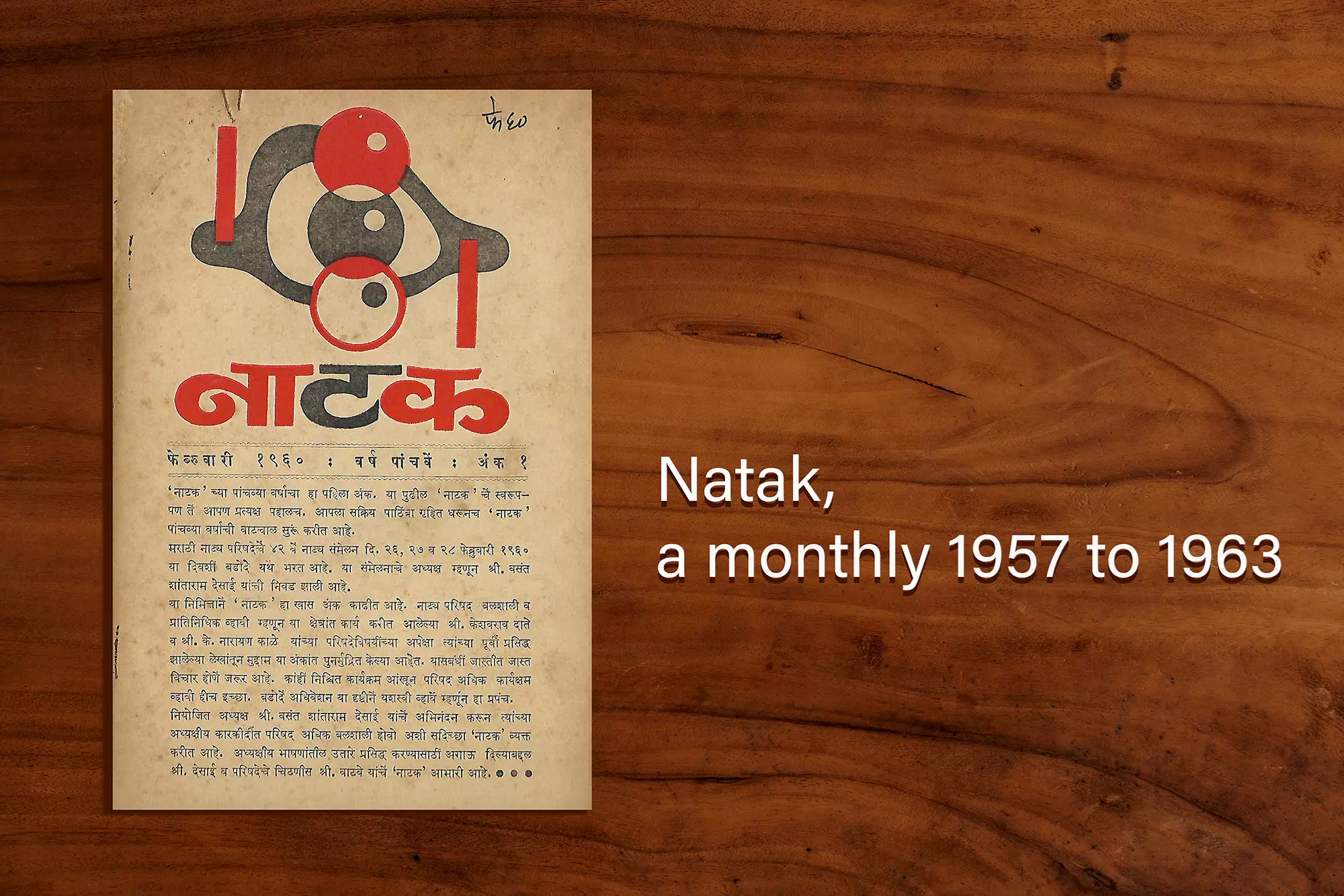
The monthly Natak was started by SN Andhrutkar in 1957. This was a small size booklet in black and white. Nothing lavish. But it had very good articles. My father wrote some series of articles like Greek Theatre, Sanskrit Theatre, Theatre Architecture, and so on. These articles should have become full-fledged books with illustrations. I have a collection. But not complete. My father later taught these subjects at the annual theatre workshops of the government which Vijaya Mehta and Madhav Watwe conducted. There were no theatre training facilities in those days. NSD had not started. Alkazi conducted private classes for his own troupe members.
Sahitya Sangh decided to build its theatre. Funds were collected. Plans were prepared based on my father’s plans. One big change was that they put the stage on the Queens Road side instead of the Girgaum side. This necessitated some alterations, but the stage and auditorium areas remained the same.

Most of the dimensions remained. The boxes, the FOH lighting, the position of the light and sound cabins, the basement and trap doors, the height of the space above the stage for flying scenery and painted curtains, the wing spaces, the plan of the seating, the distance of the gallery and its height from the lower level, etc. Bapurao had suggested that the aisle should not begin from the first row but from the seventh or eighth row. A split seating arrangement from the first row gave the actors the idea that the audience was split and that is disheartening.
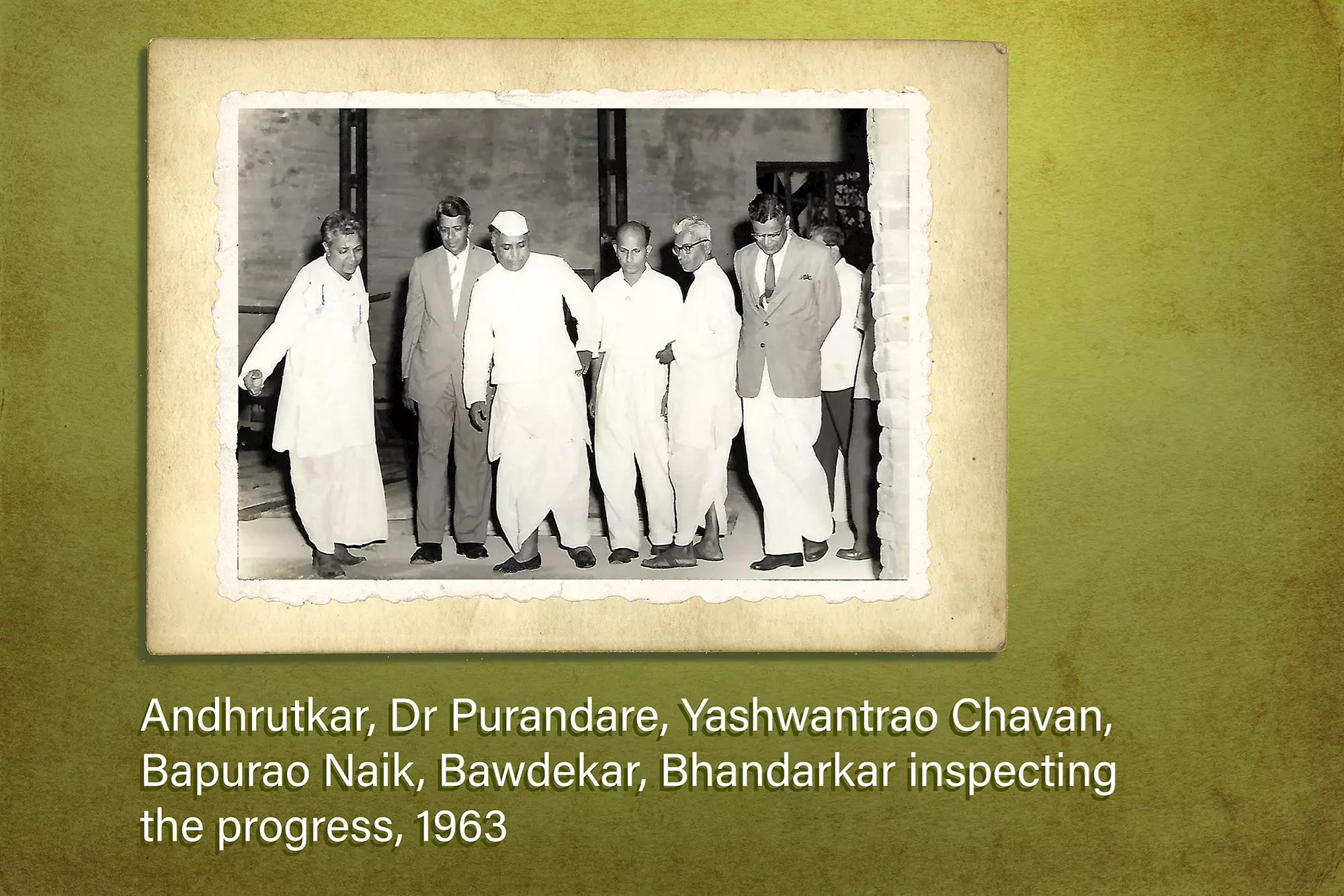
A publication was brought out when the theatre opened in 1964. This contains two articles by Bapurao Naik. One is a very intimate and touching pen portrait of Dr Bhalerao. The other is a description of the building. Both articles are sensitive and studious.
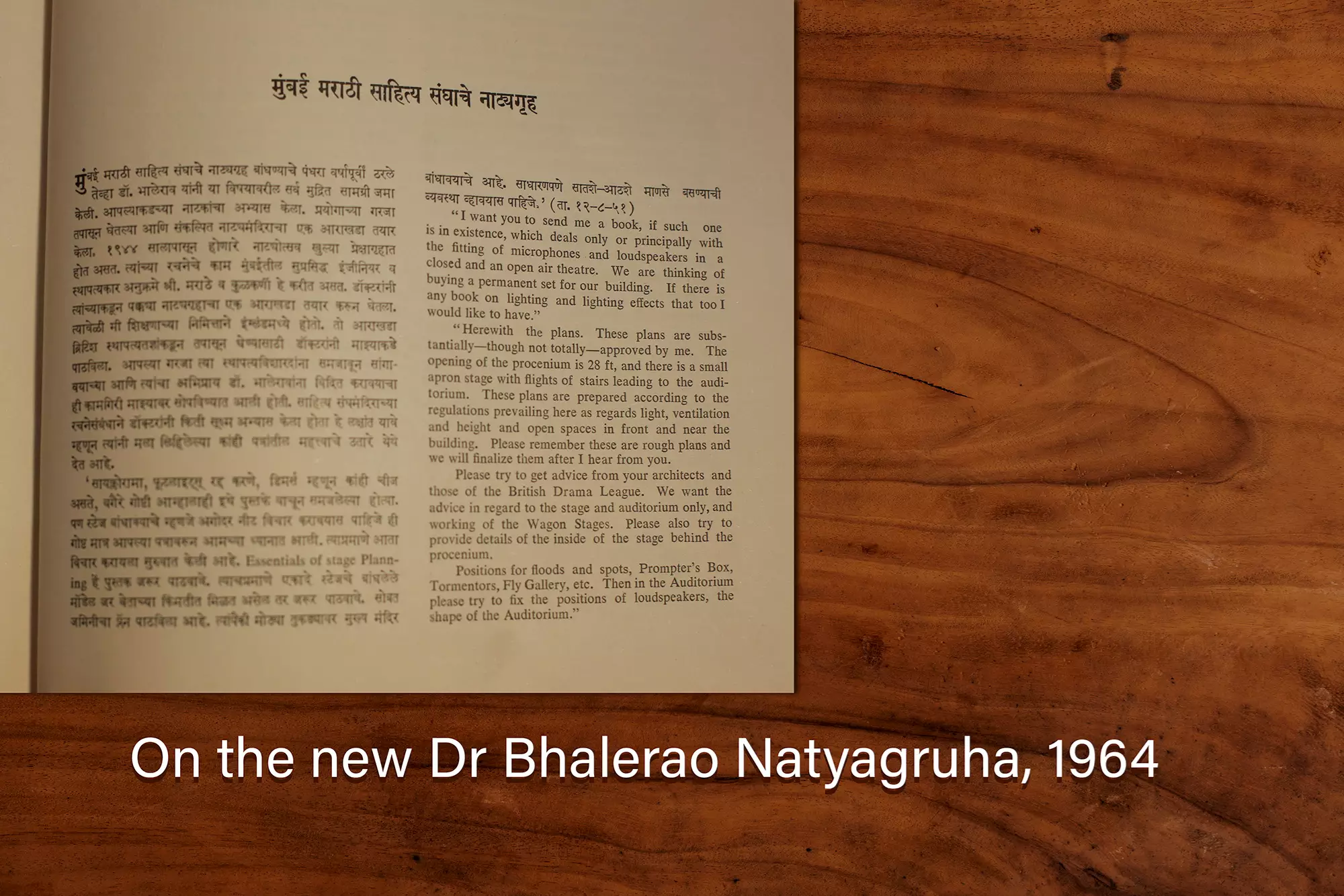
Sahitya Sangh had its own publications wing and it brought out a book in 1969. It had excellent articles by stalwarts. My father wrote ‘Marathi Rangabhoomicha Tantradrushtya Vikas’. This is a seminal article. It traces the history of Marathi theatre, the influences of Sanskrit theatre, Bharata’s Natyashastra, Indian folk traditions, English language plays done in Mumbai, Parsi theatre, and so on. It describes the designing of plays from the beginning and shows how we were very slow in developing a modern style or practice. It talks about painted scenery and painted curtains. Then it shows how new theatres and influences of other language theatres slowly changed our practices in set design, like box sets, how Ibsen made it necessary to adopt what the modernists did and the very important impact of thinkers like Edward Gordon Craig. I am sure that this is the only and the most important piece of scholarly and researched writing on Marathi theatre, especially on stagecraft.
Involvement in literature
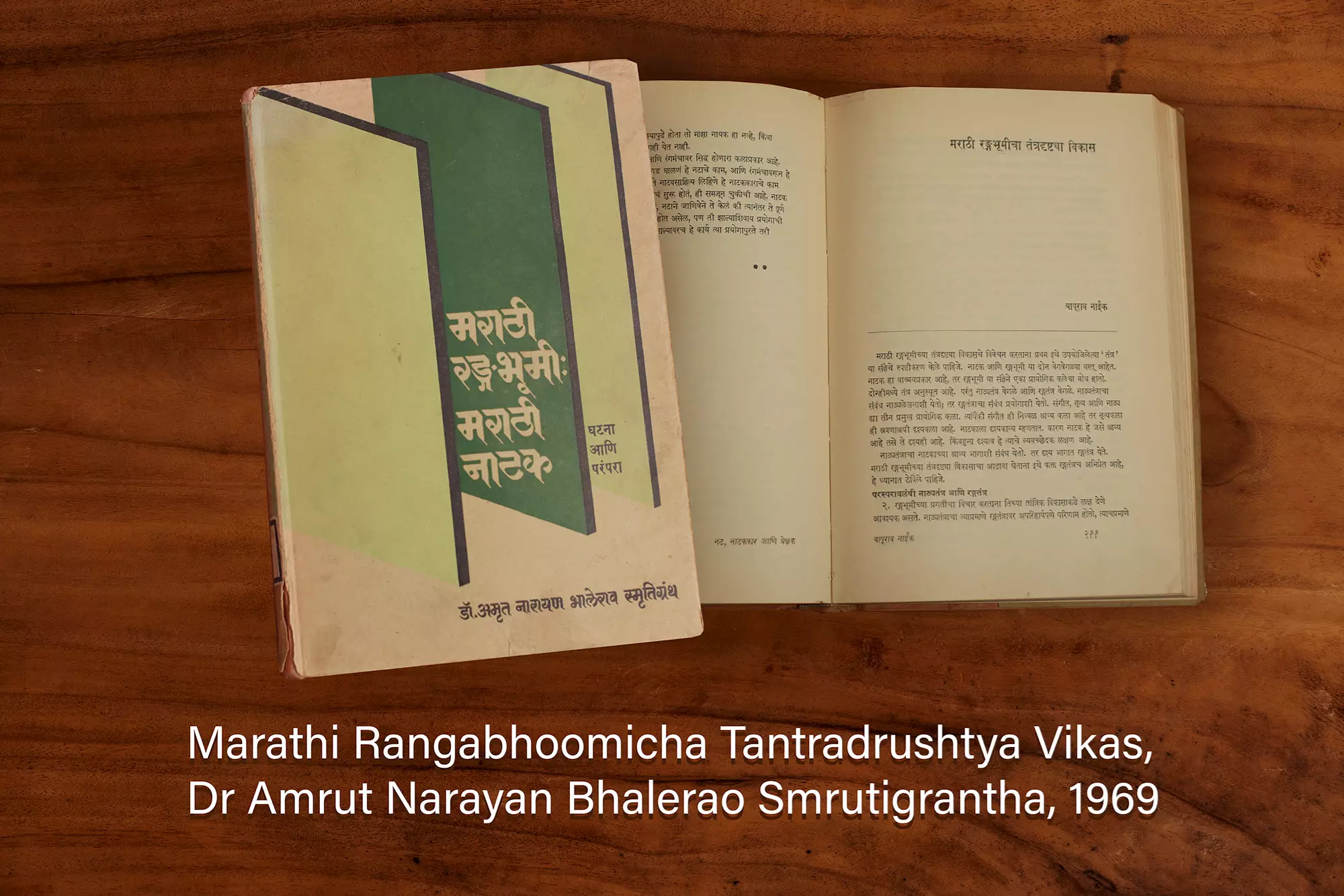
The period from 1964 when the new building opened till about 1972 at least, there was much activity in theatre and literature — many new plays by new playwrights. Bapurao was a keen enthusiast for theatre education and training. The early batches of Alkazi’s NSD were passing out. Kamalakar Sontakke was a gold medallist. My father invited him to Sahitya Sangh and initiated the Amrut Natya Bharati, or A Na Bha, being the initials of Dr Amrut Narayan Bhalerao. These classes were on for many years. Sontakke went to England and it stopped. Then Ramesh Chaudhari and later Waman Kendre ran it. Many successful actors and directors emerged from this course. Sontakke, upon returning, became the head of the Aurangabad University Theatre Department, the first of its kind in Maharashtra. Now we have university departments in Pune, Nagpur, Kolhapur and Mumbai. Bapurao Naik was the pioneer in this field. He even collaborated with the NSD.
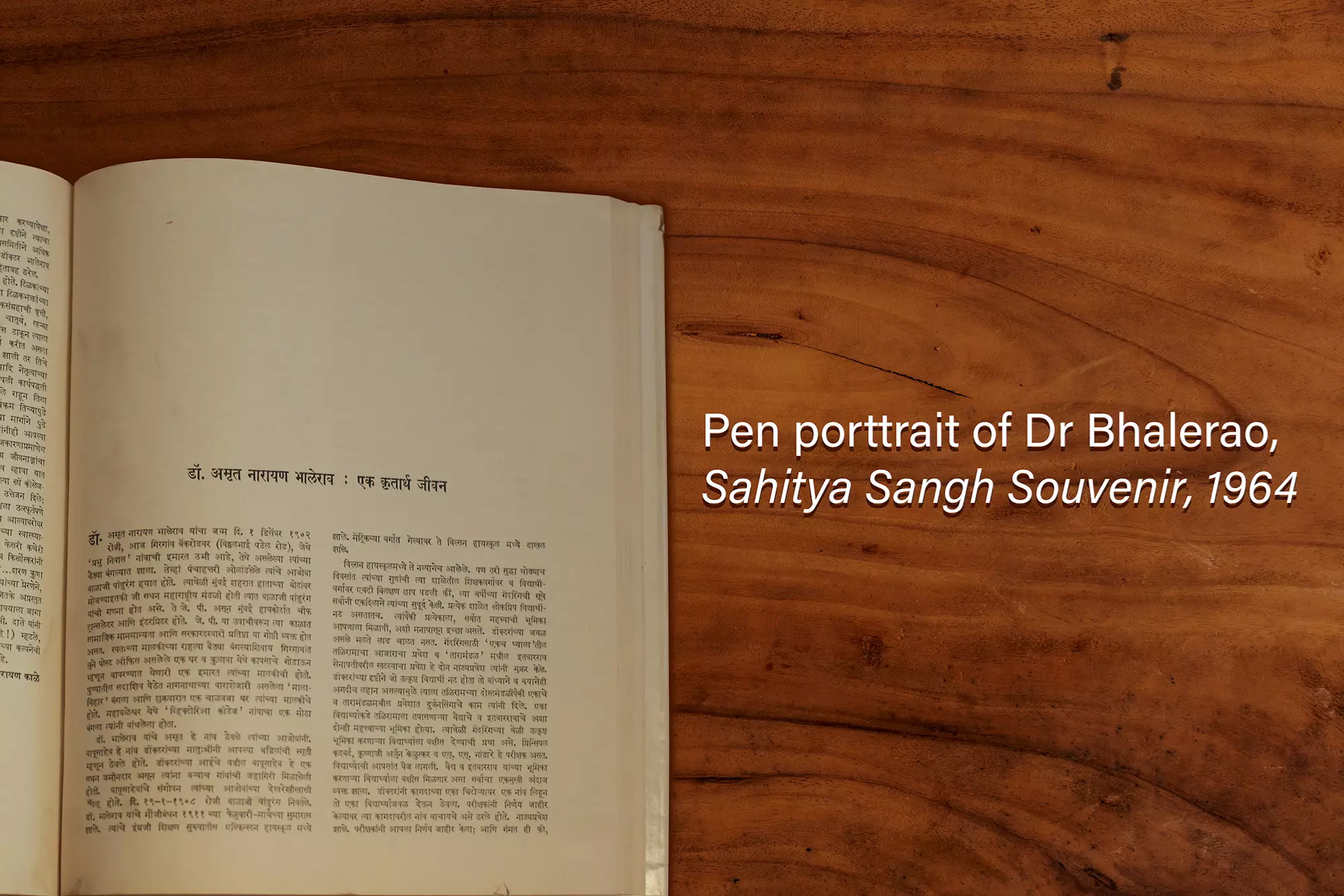
There were regional literary institutions in Maharashtra. The first was Pune’s Marathi Sahitya Parishad. The second was Mumbai Marathi Sahitya Sangh. Vidarbha joined us in 1956. So did Marathwada. Nagpur had Vidarbha Sahitya Sangh and Aurangabad had Marathwada Sahitya Sangh. There was no co-ordination. No standardisation in shudhdha-lekhan. The annual sammelans were not truly representative. My father and Datto Waman Potdar took the initiative to form the Marathi Sahitya Mahamandal. All literary institutions were brought together. Later Goa, Baroda, Indore, Gwalior, Hyderabad also joined.

Now there are too many controversies in this, including the Nayantara Sehgal speech. But initially and for many years, the Mahamandal was really effective. One of the major contributions was the Shudhdhalekhan Niyam, now in full use.
Another major institution which Bapurao took a keen interest in was the Akhil Bharatiya Marathi Natya Parishad, which organised the annual Natya Sammelan. This was an event as big as the Sahitya Sammelan. The Parishad now has its own theatre at Dadar which has a badly designed theatre known as the Chavan Natyagruha. The Parishad has been involved in many controversies in recent times. So much so that we had to agitate in the satyagraha style under the leadership of Damoo Kenkre where persons like Vijay Tendulkar and Alec Padamsee were also present.
The Parishad now has a president elected for a long term. In those days there was a president for the Sammelan. He was not the administrative head, but he was assisted by a senior vice-president who managed the Parishad. Now that position is the administrative president. The Parishad headquarters were in the Sahitya Sangh then and my father was the senior vice president and the administrative head for many years.
The Marathi Vishwakosh
Another major institution was founded around the year 1960. This was the Sahitya ani Sanskruti Mandal or the State Board for Literature and Culture. It was headed by Tarkateerth Laxmanshastri Joshi. Very senior and top-class Marathi intellectuals, writers, professors were members. GD Parekh, AB Shah, DV Bedekar, Na Ra Phatak, Anant Kanekar, PL Deshpande, MP Rege and my father were members. The main activities of the Mandal were to publish books, reprints of out of print classics, Marathi Vishwakosh (encyclopaedia), dictionaries, companion volumes to literature, language, culture.
The Mandal was split into two around 1980: The Vishwakosh work was entrusted to a new committee. The entire physical aspect of the Vishwakosh was designed by Bapurao. The first volume was printed at Mouj Printing Bureau. From the second volume the Vishwakosh Mudranalaya at Wai was established. My father was the principal force behind this. This is one more great contribution. I also worked on this committee as printing expert for a long time. In fact, I exposed a scam in the purchase of Bible paper amounting to crores. I knew the physical specifications of Bible paper, and how my father had got it manufactured. The paper that the Mandal was now buying was much inferior. I got it tested. And moreover, there was no requirement at all. Only volume 17 was published during my long tenure and the paper ‘purchased’ was enough for at least six volumes! It is enough to say that no paper was purchased. Only bills were paid.
The government had a director of cultural affairs. The incumbent was Rajaram Humne, who was a friend and he sought advice from my father. My father proposed that Maharashtra should have a Kala Academy. The government set up a committee under the chairmanship of Tarkateerth Laxmanshastri Joshi. He entrusted the task of preparing a blueprint to my father. He prepared a detailed and comprehensive report. But things did not move fast enough and the blueprint was shelved.
Much later Damoo Kenkre convinced Dayanand Bandodkar, who adopted the blueprint and the Goa Kala Academy was founded with Damoo Kenkre as the first head.
Maharashtra did not have a Kala Academy for many years. When PL Deshpande died, Satish Alekar, Meena Naik and I went to meet the education minister Ramkrishna More and told him that that we should have an academy named after PL Deshpande. He accepted the proposal and the PL Deshpande Kala Academy was founded on the site of Ravindra Natya Mandir. It is a horrible building designed by Shashi Prabhu. Even the academy is run badly. Maybe it will improve in future.
Teaching printing
It was during this period that my father was a visiting lecturer in the Government Institute of Printing Technology in the JJ campus near Victoria Terminus. Here he taught composition (typesetting), letterpress machine work, costing and estimating, business management and so on. I was not a student there but I have attended some classes. I remember one such class where he taught paper sizes. I have never forgotten this subject and I have myself taught it later. It was a very comprehensive lecture with insight into why these paper sizes, how the sizes of various articles of print were affected, as well as how machinery sizes corresponded, right up to the sizes of envelops!
The Indian Standards Institution
After Independence, we established the Indian Standards Institution. My father was involved in this from our Nagpur days. He served on some printing related sectional committees, like paper and ink. As we moved to Mumbai my father was made the chairman of the Ink & Allied Products Sectional Committee. He contributed immensely and remained a chairman for over ten years. The Indian Standards Institution made him a fellow, a rare honour.
Typography of Devanagari
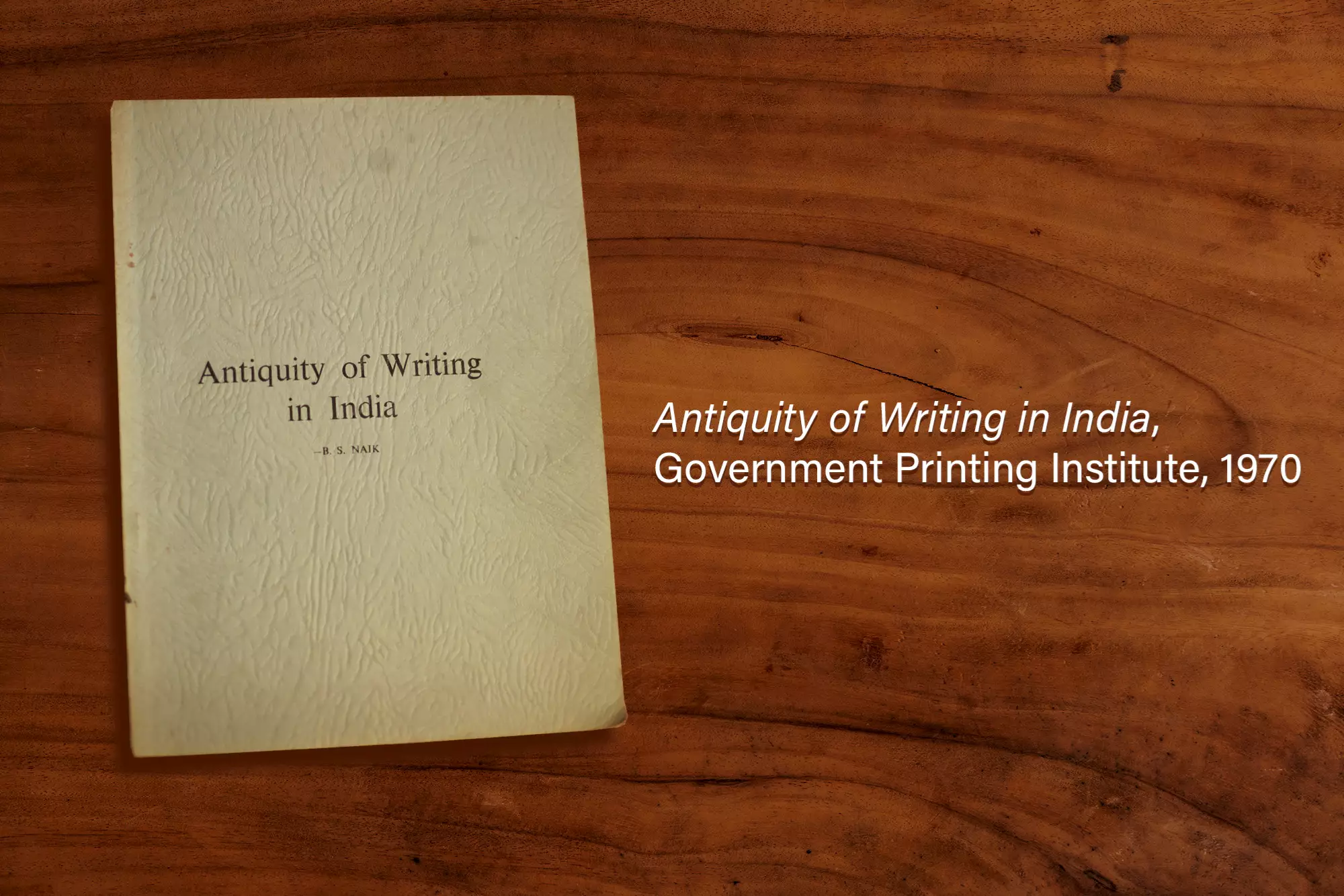
The Government of Bombay set up a committee in 1959 basically ‘to go into the question of standardising the keyboards for typewriters and mechanical composing machines’. My father was a member and he was ‘entrusted the work of writing the monograph on the ‘Typography of Devanagari’. What began as a monograph became a treatise in three bulky volumes. Bapurao began his research really at the beginning.
He published a small booklet called The Antiquity of Writing in India. This was the first chapter of the first volume. The other chapters were: 2. Early Scripts of India, 3. Origin of the Brahmi Script, 4. Origin and Development of Indian Scripts [all languages], 5. Origin and Development of Indian Numerals, 6. Devanagari Lipi, Analysis and Calligraphy of Devanagari, 8. Early Printing in Indian Scripts, 9. Typographic Evolution of Indian Scripts, 10. Development of Devanagari Typography, 11. Nirnaysagar Era.
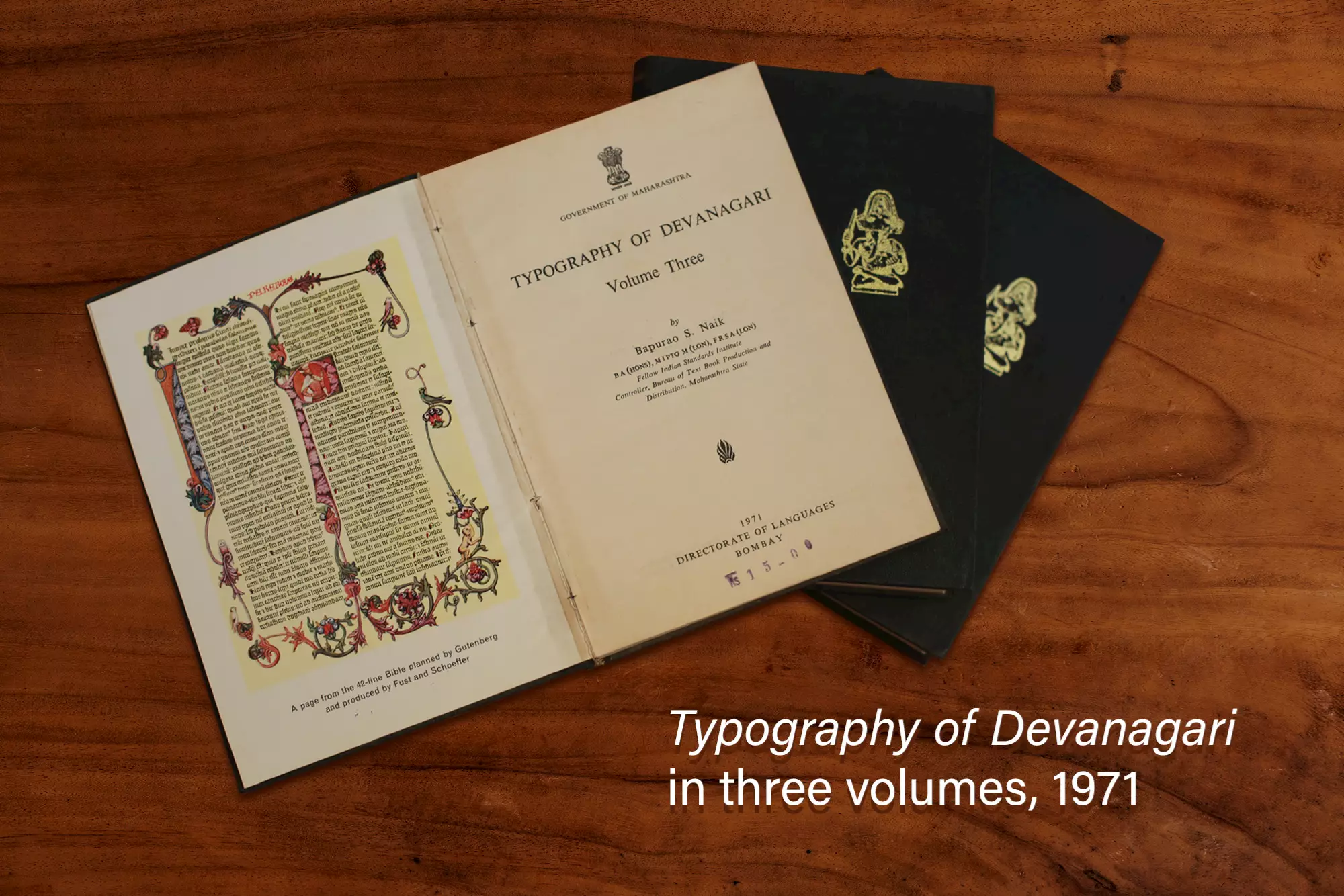
The chapters of Volume II are: 12. Devanagari Typesetting, 13. Devanagari Script Reforms, 14. Mechanical and Photo-composing Machines, 15. Graphemic Frequencies of Devanagari.

The entire Volume III was art plates. The first and second volumes also had many art plates and tables, including frequency tables. This was a painstaking job. It had to be done manually. Thus, every letter (grapheme) in four different specimens like books and newspapers had to be quantified. These constitute forty pages of data. These frequencies are used to determine the layout of the keyboard. Thus, more frequently used graphemes are placed on positions using the index fingers of both hands, followed by the middle finger, the ring finger, the little finger. The thumbs are normally used for the space bar. All this is worked out for the typewriter, tele-printer, Monotype, Linotype. Later this was used for computer keyboard layouts. But that is beyond the scope of the book. He wrote a separate monograph in 1980: A Revolution in Printing.

A Ka Priolkar was a scholar and professor of Marathi. He was president of the Karwarsahitya sammelan in 1951. Apart from basic work like The Goa Inquisition, Goa Rediscovered, he was also the author of the monumental work The Printing Press in India. It traces the history of printing in India. Beginning with the first printing press which reached India in 1556, a little over a hundred years after invention of movable type and a hand press in Mainz in Germany around 1540, he traced the entire history. My father was fascinated by this book, being a printer himself. So, he befriended Priolkar who called him his son and himself did further research with a different accent. He delivered lectures in Pune in 1971 entitled Bharatiya Grantha Mudran, Indian Book Printing. For this, he collected over 300 old books. The first book was printed in Rome in 1778. Such books are called inculabula or cradle books. In Marathi they are known as dolamudrite. The lectures were printed in book form in 1980. A beautifully printed book by CS Latkar in Kalpana Mudranalay, it contains covers and title pages of these books. I recently spoke in Leeds University in a seminar on ‘The Legacy of Letterpress Printing in India’. I am not a scholar in this field. I based my lecture on these two books: The Printing Press in India and Bharatiya Grantha Mudran. I have serialised the English translation of the book in Print Bulletin (which I edited) in 2001. It needs to be published in book form.
Priolkar passed away in 1971. A committee was formed to publish a commemorative volume on Priolkar: A Ka Prioklar Smrutigranth. My father was asked to write an article on ‘Priolkar ani Mudran Samshodhan’. There was a deadline for publication: the first death anniversary. He wrote the article but kept making additions to the composed matter. I was printing the volume myself. At the last moment we decided to print the volume without my father’s article.
Then I sat on his head and finalised 64 pages. But as it was not possible to now include the article, we published the article as a separate book: A Ka Priolkar ani Mudran Samshodhan.

Designing typeface
Even after writing Typography of Devanagari, my father continued his interest in the subject. Monotype and Linotype both embarked upon phototypesetting. Hot metal technology started dying out, as did the Gutenberg process of letterpress. Lithography, invented by Alois Senefelder in 1796, developed into offset printing. Hot metal type was of no use. As letterpress got slowly replaced by offset lithography the hot metal mechanised composing machines gave way to photo-typesetters. And it became necessary to design typefaces and keyboards for Devanagari. My father had the foresight and he founded the Akshar Samshodhan Kendra with old and new typographers, including LS Wakankar and Ra Kru Joshi. They both designed typefaces for various machines. My father designed Shariva Devanagari for the Quadritek photosetting machine.
I used this typeface from 1981 to 1990 and printed many books and periodicals.
Working on textbooks
School textbooks were partly nationalised and mostly private. Some of the government textbooks were horrible. Pra Ke Atre, the editor of Maratha, criticised these in his editorials. History and geography books were the worst. The English translations were horrible. Bolun chalun Shivaji motha raja hota was translated as ‘walking talking Shivaji was a great king’. The government decided to change all this. And the Bureau of Textbooks Production and Curriculum Research was founded in 1967. My father was appointed the first controller of production. He had full control over all the operations after the MSS was prepared by the Curriculum Research Wing.
This involved illustrating all the books in eight languages. It began by the standard I language primer. The standard II had a second book, on arithmetic. And thus, it went on year by year. The venture became very successful right away. The text improved. But the production improved much more as compared to earlier books, both private and government. Maharashtra books were adjudged the best not only in India, but in the UNESCO conference held in 1971 in Kuala Lumpur.
My father represented India here and presented his paper ‘The Publications Industry in India’. He also published The Physical Production of Textbooks at the same time. There is great insight in both the books. Elements of book design are explained with reference to sizes, paper (grammage and texture), illustrations, colour reproduction, typefaces and sizes, margins and spacing, reference material such as maps, charts, graphs, tables, photographs, paintings. Printed specimens were pasted in the book.
The best available artists and illustrators were engaged. Deenanath Dalal, Mario Miranda, MR Achrekar, Gopalrao Deuskar, Padma Sahasrabudhe, Prabhakar Gore. The best. This was possible only because Bapurao had special relationships with these persons.
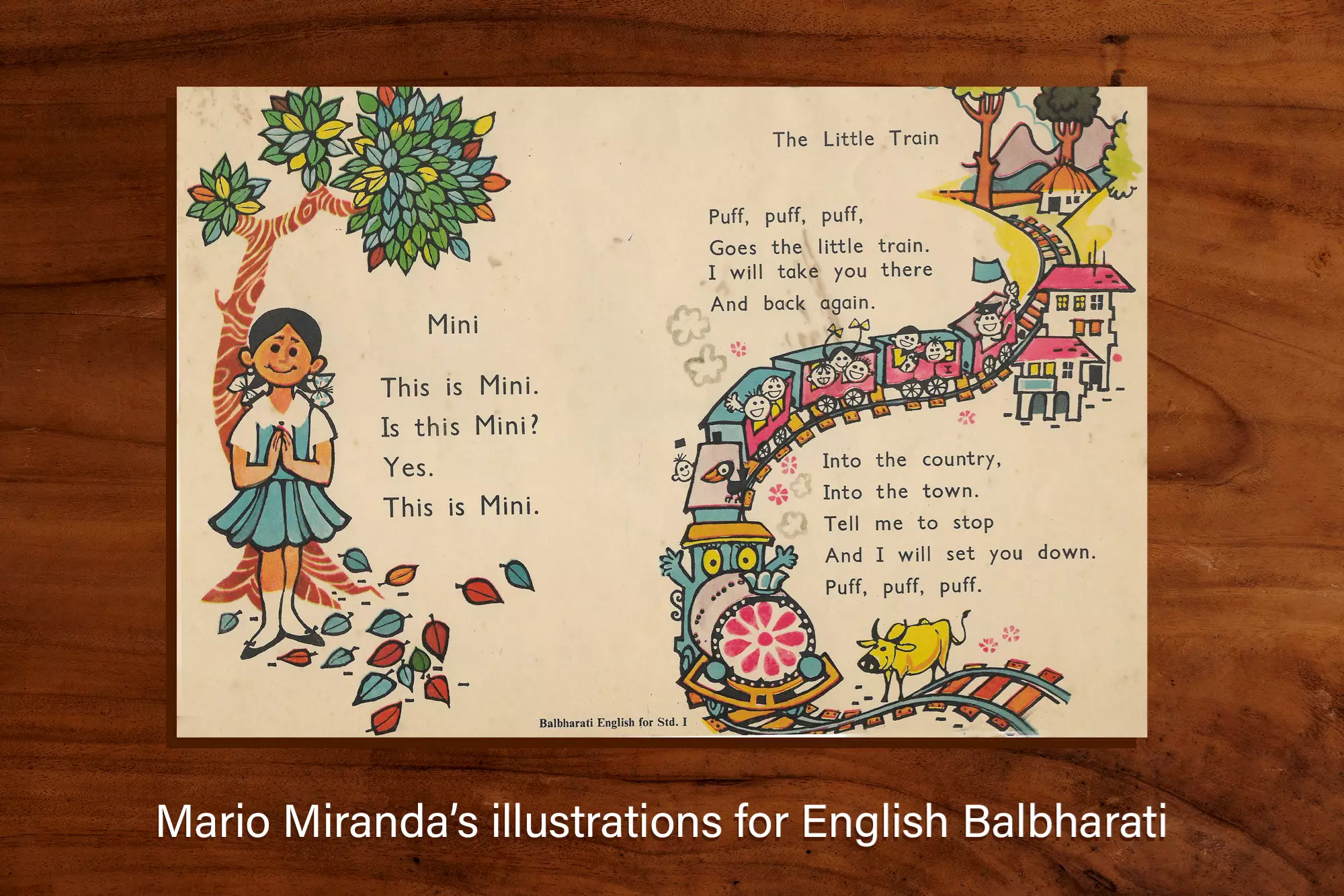
PL Deshpande wrote a special book on Gandhiji. This was illustrated by Achrekar. NS Bendre, KK Hebbar, MR Achrekar painted their own versions or interpretations of Gandhiji. The whole set was available to students called Gandhi Smruti Manjusha. PL Deshpande’s book is excellent. The paintings are in the Balbharati office in Pune.

My father translated the first volume of Typography of Devanagari in Marathi for the Sahitya Sanskruti Mandal. RK Joshi designed a beautiful jacket. I printed the book and the jacket. The matter on the spine is readable from down to up. I objected but succumbed to RK argument.
Moro Vinayak Shingne wrote Mumbaicha Vruttanta in 1889. It was out of print. My father proposed to the Sahitya Sanskruti Mandal to reprint it, which they did. Bapurao wrote a researched preface to this edition. It ran into 75 pages. For this he did research on the developments in Mumbai in the intervening period.
My father retired from the Bureau of Textbooks in 1975 at the age of 55, as he had decided to do very early in his career. The work that he did has remained till today. But the government and the officers do not have the vision which Bapurao had. I had to wage a war against the Bureau in 2000 with PILs and writ petitions. The paper is now 58-gsm from 70-gsm. The size has been reduced by compromising on the margins. Section sewing has been dropped for wire stitching. Today’s textbooks are worse than those of the pre-Bureau era.
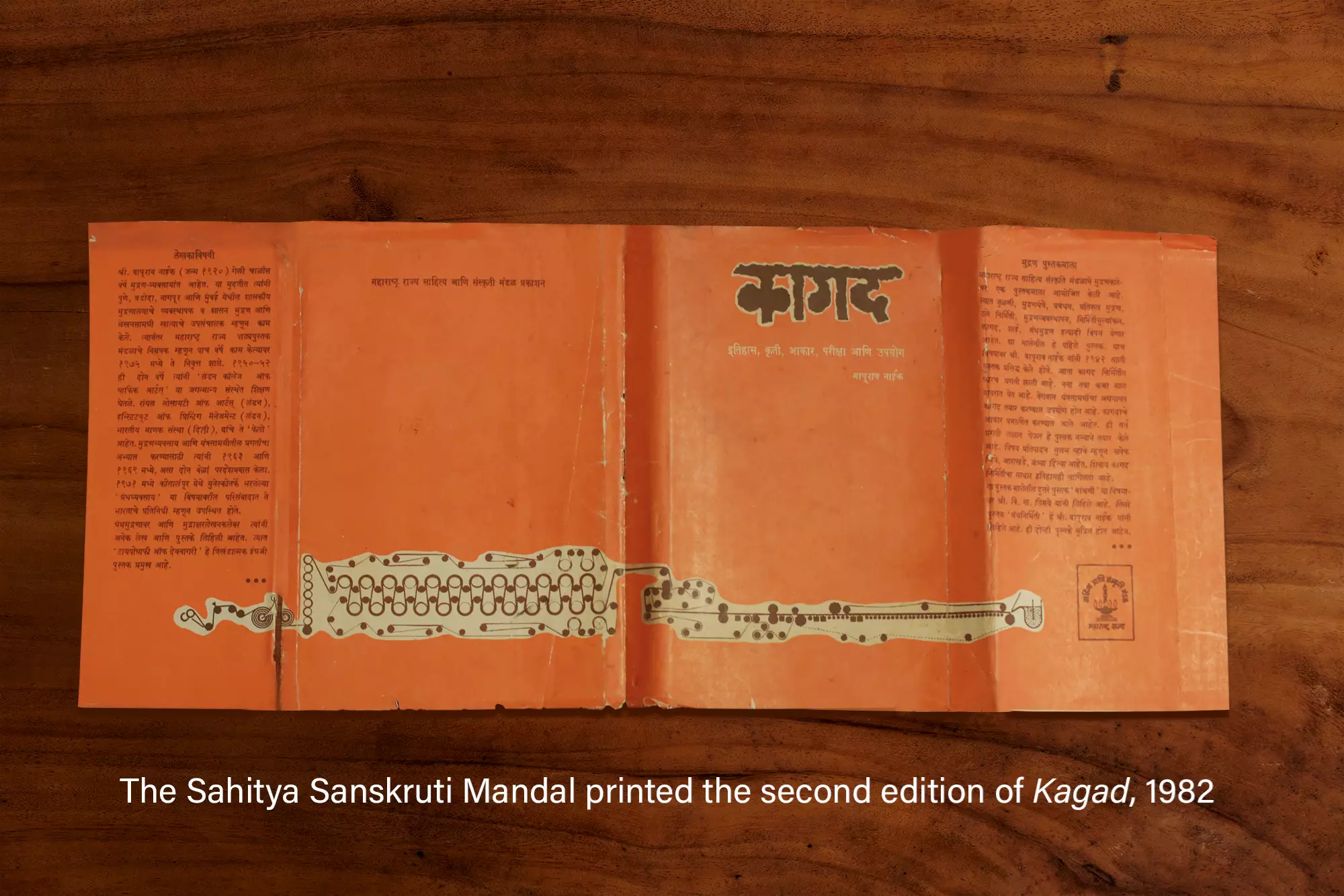
Around this time Sahitya Sangh started the Na Ra Phatak Samshodhan Kendra. My father was interested in paying more attention to this research wing. But that did not happen. It would have been another achievement. Later, the president Gangadhar Gadgil undertook some activity here with Vasant Abaji Dahake and Prabha Ganorkar. He formed a small committee with these two persons and me and the project was: ‘Mumbai in Literature’. I too could not find time. But Dahake and Ganorkar did some work. The Centre is now defunct.
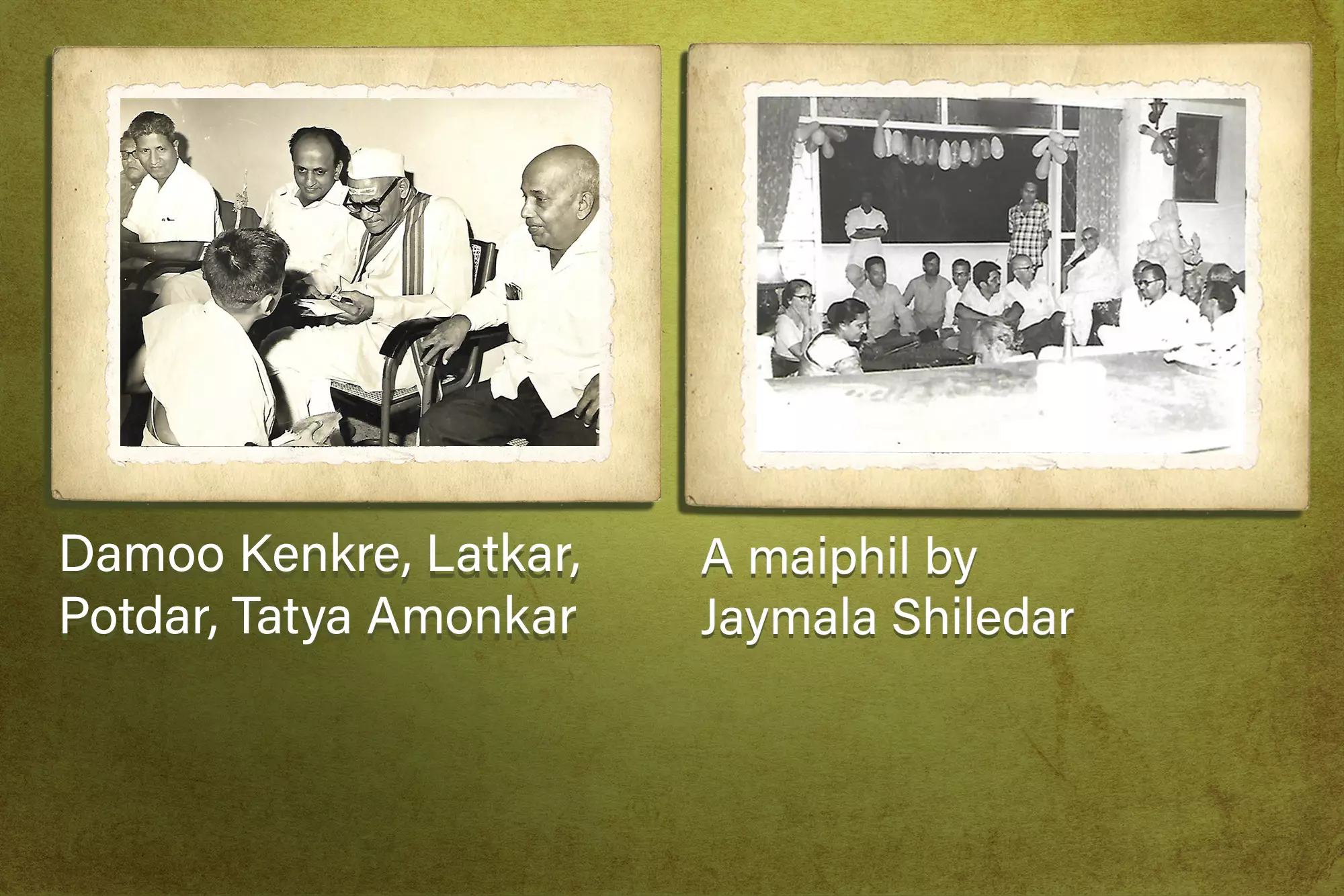
Bapurao supervised the revival of Sahitya, being a very well-known publication of Sahitya Sangh, with Umakant Thomre as editor. But that was for a very short while.
Reading and writing
My father spent the last ten years of his life in reading and writing. He travelled to Europe and USA with my mother. He designed a typeface. Published articles. Managed Kalanagar as chairman. Founded local organisations which are still functional: Sahitya Kala Mandal and Sangeet Sabha. We used to have sangeet baithaks at home. Bhimsen would come and stay with us and sing for my father. As did Kumar Gandharva and Vasantrao Deshpande.
The list of books by Bapurao Naik was printed as back cover to A Ka Priolkar ani Mudransamshodhan in 1976. Apart from the books we have discussed he wrote some articles in major printing journals:
Maharashtrateel Granthamudran Vyawasayacha Vikas (Mudrika, 1971)
Pathyapustakanchi Janmakatha (Nawneet, 1976)
Granthamudranachya Samasya (Mudran Prakash, 1976)
Granthamudranacha Onama (Mudran Prakash, 1979)
Devanagari Lipi ani Sulabh Julni (speech in Mudran Parishad, Jalgaon)
Mudran Siddhata (nine articles in Mudran Prakash)
Book Production & Distribution (Print Bulletin, 1972)
Standardisation as Applied to Printing (Mudran Vidya, 1962)
Small Presses in Maharashtra and Problems Facing Them (Mudran Vidya, 1967)
Mechanical Composition in Devanagari (Mudran Vidya, 1963)
A book lover
Bapurao Naik was a book lover. When he passed away he had over 10,000 books in his personal collection. He was an expert binder and as such also a good preserver of books. For his two books, Typography of Devanagari and Bharatiya Granthamudran, he collected over 300 old and rare books, which he restored and preserved. We still have them, and this collection has been recognised by the Archives Department of the Government of India with a one-time grant in the year 2001.
We never have to borrow a book. We always have what we need. We only buy new books and keep the library updated.

Regular visitors to our house were Datto Waman Potdar who stayed with us when in Mumbai, Tarkateerth Laxmanshastri Joshi, Na Ra Regular visitors to our house were Datto Waman Potdar who stayed with us when in Mumbai, Tarkateerth Laxmanshastri Joshi, Na Ra Phatak, A Ka Priolkar, Govardhan Parikh, Me Pu Rege, Ra Bha Patankar, Vinda Karandikar, Kavi Anil, Kusumagraj, Kavi Yashwant, Ga Di Madgulkar, Va La Kulkarni, PL Deshpande, Da Ga Godse, Dnyaneshwar Nadkarni, Damoo Kenkre, Vijaya and MV Rajadhyaksha, Nanasaheb Phatak, K Narayan Kale, NS Bendre, K KHebbar, et al.
He died on 31 December 1985. Thirty-four years ago.
And thus, I pay my respects to my father, my guru in printing and theatre, and my friend.
Meena, Rajeev, Shariva and Manava have assisted me in this venture. I thank them. I also thank Seema Arolkar, a close associate in my earlier ventures, for preparing the visual material. I thank Dr Bal Bhalerao for giving me this opportunity to begin the Centenary under the auspices of Sahitya Sangh. I also thank Subhash Bhagwat and Kirtikar for helping with the arrangements.
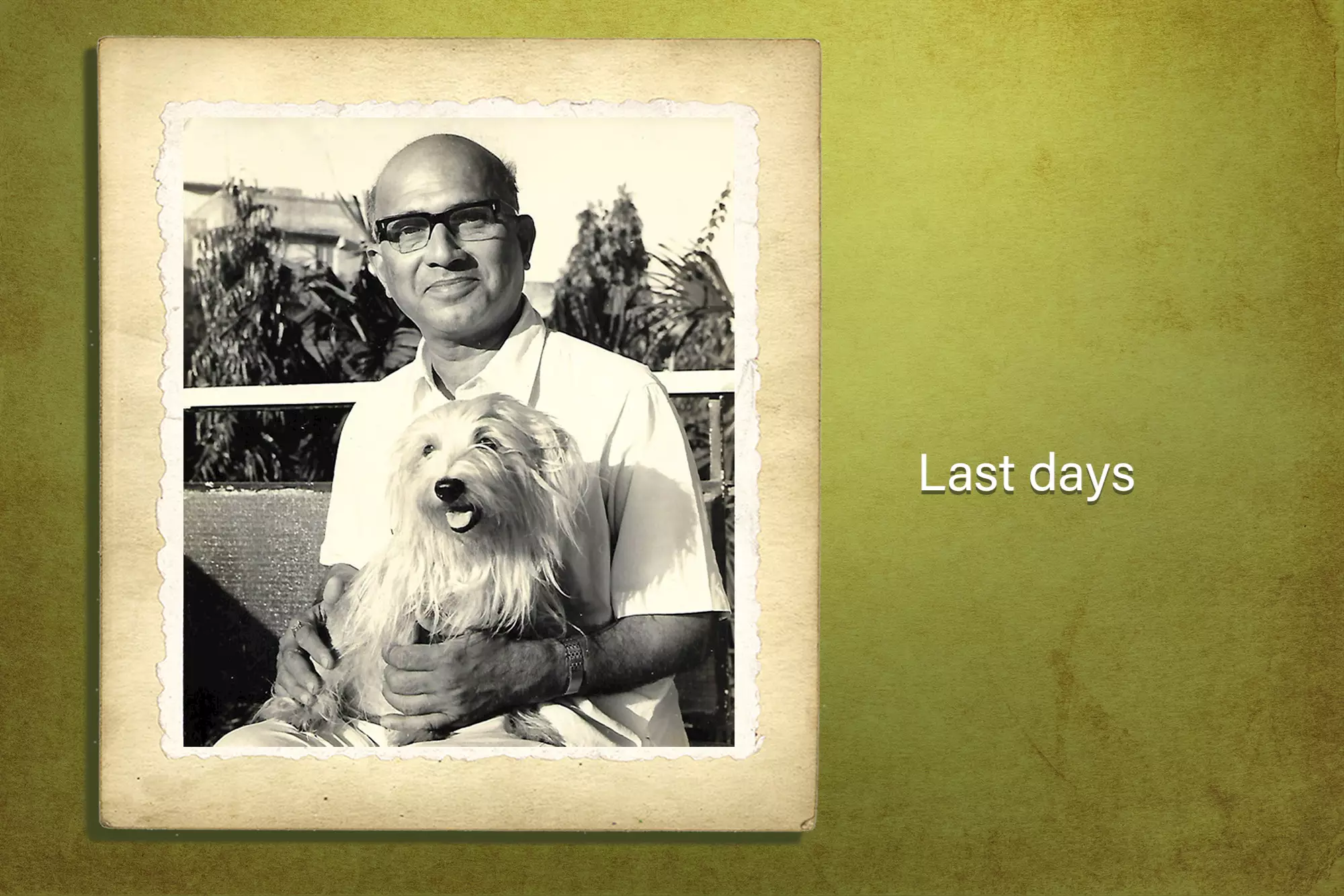















 See All
See All